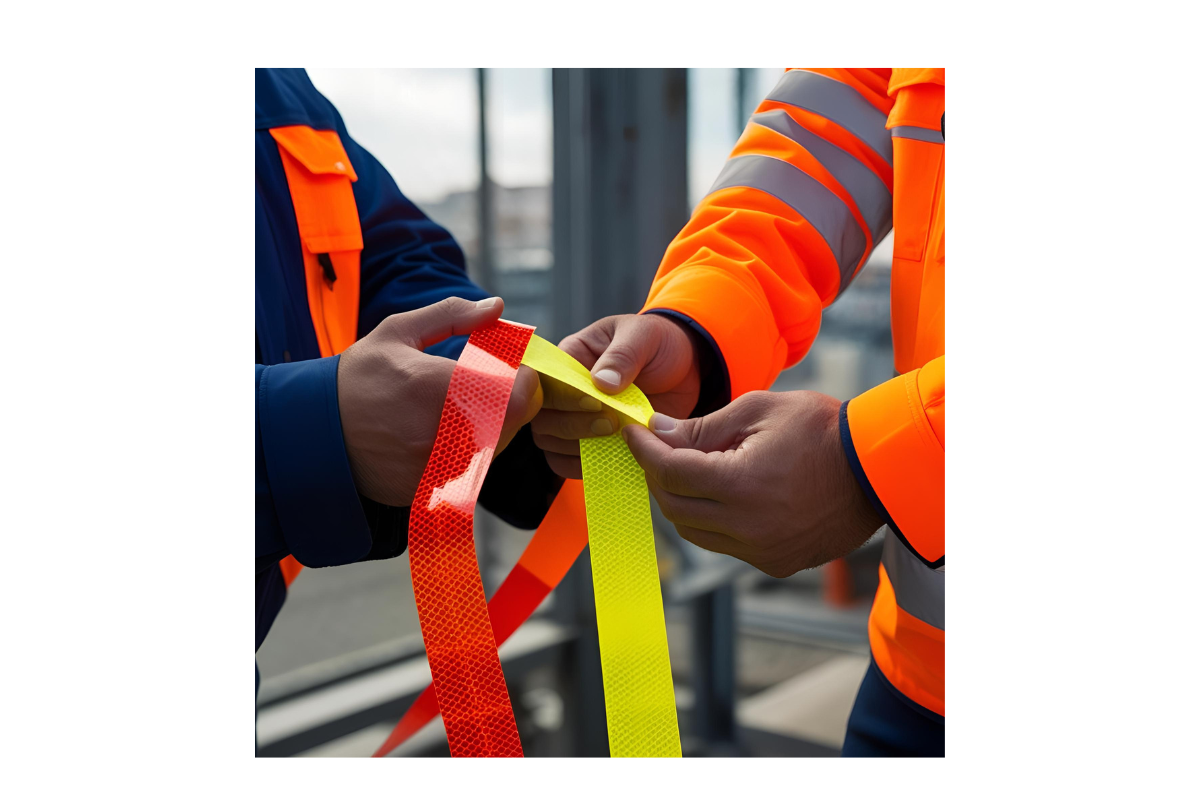Your basket is currently empty!
EN ISO 20471 High-Visibility Clothing Standards Explained
When it comes to staying safe on the job, especially in low-light or high-risk environments, what you wear matters. EN ISO 20471 plays a major role. This international standard sets out what’s required for high-visibility clothing, ensuring you’re seen and protected in hazardous conditions.
But safety doesn’t stop after you buy the gear. To stay compliant and fully protected, it’s essential to inspect, maintain, and care for your garments regularly.
Whether you’re working near traffic, operating heavy machinery, or simply need to be visible in dim conditions, understanding EN ISO 20471 helps you choose the right clothing and stay aligned with workplace safety standards.
What is EN ISO 20471?

EN ISO 20471 is the international standard that sets the benchmark for high-visibility workwear. Introduced in 2013, the new standard replaced the EN471 with several improvements, offering updated, more precise guidance for those in high-risk situations at work.
It ensures your clothing is designed to keep you visible, and therefore safer, throughout your shift, whether it’s day or night. One of the standout improvements in this standard is its clearer distinction between different risk levels. This helps you better evaluate what level of protection is right for your specific job.
You’ll see EN ISO 20471 applied to a wide range of garments: jackets, trousers, vests, coveralls, and more. Each item is assigned to one of three protection classes, based on the amount of visible material and the severity of the work environment.
Key Requirements of EN ISO 20471
To meet this safety standard, hi-vis clothing must follow specific rules around materials, design, and durability.
Minimum Areas of Material
EN ISO 20471 sets minimum surface area requirements for both fluorescent and retroreflective materials, depending on the garment’s class:
| Garment Class | Fluorescent Material | Reflective Material |
| Class 3 | 0.80 m² | 0.20 m² |
| Class 2 | 0.50 m² | 0.13 m² |
| Class 1 | 0.14 m² | 0.10 m² |
Colours and Reflective Tape
Only three colours are approved: yellow, orange, and red. Reflective tape must be at least 50 mm wide and strategically placed to provide full 360° visibility.
This usually means wrapping the tape around the torso, arms, or legs, so you’re clearly visible from all angles.
Retro-reflective tape is tested for its reflectivity using a photo-goniometer, where a light is shone onto the tape and viewed at different angles. This test is performed on wet and dry tape, to simulate the performance of the tape on a garment used in various weather conditions.
Durability
Visibility must last and not just look good after the first few washes. Garments need to remain compliant after repeated washing and regular wear.
Following the care instructions is key. EN ISO 20471 also includes durability standards for thermal resistance, ensuring your gear stays effective in tough working environments.
The Three Classes Under EN ISO 20471
EN ISO 20471 groups hi-vis clothing into three classes, each designed for different levels of risk based on the amount of fluorescent and reflective material used.
The higher the class, the greater the visibility, and the more protection it offers in hazardous environments.
| Class | Visibility | Typical Jobs | Key Features |
| Class 1 | Low | Warehouse, retail, car parks | Basic coverage, minimal reflectivity |
| Class 2 | Medium | Roadside, delivery, utilities | More coverage, reflective torso/legs |
| Class 3 | High | Motorways, rail, emergency work | Full coverage with sleeves and trousers |
Class 1 is suited for low-risk areas, Class 2 offers an intermediate level of protection, while Class 3 is essential for high-speed traffic zones or night work. All garments must meet the ISO 20471:2013 standard.
Check out our full guide to the three Classes of High-Visibility Clothing for more information.
How to Check If Your Hi-Vis Is EN ISO 20471 Certified

To ensure your gear meets the EN ISO 20471 international safety standard, it’s important to know what to look for – starting with the label.
Begin by locating the EN ISO 20471 symbol. This confirms the garment has been tested and certified for visibility in hazardous environments. You should also find the class number (1, 2, or 3), which indicates the level of protection the garment offers. Additionally, make sure the label includes the standard reference “ISO 20471:2013”, which is the most current version.
Another key detail to check is the CE marking. This shows the product has passed legal safety requirements in the UK and EU. If your garment doesn’t display a CE mark, it may not be compliant or suitable for use in regulated work environments.
If any of these are missing, the clothing might not provide the level of protection required for your job. Also, always check the care instructions as these often include more information about the garment’s compliance and longevity.
Ongoing Compliance and Durability
Even certified clothing needs to be maintained. Over time, wear and repeated washing can reduce the effectiveness of fluorescent and reflective materials. To stay safe and compliant, inspect your hi-vis gear regularly and replace it if it shows signs of fading, damage, or reduced reflectivity.
Behind the Certification: Test Methods
To meet EN ISO 20471 standards, manufacturers must put garments through a series of rigorous tensile strength tests. These include:
- Performance of reflective and fluorescent materials
- Color fastness (resistance to fading from washing or sunlight)
- Dimensional stability (ensuring the garment keeps its shape and size)
These tests and tear strength requirements simulate real working conditions, helping ensure that certified hi-vis clothing will continue to perform effectively over time.
Why Compliance Matters
Wearing high-visibility clothing that meets EN ISO 20471 standards isn’t just good practice, it’s essential for safety. In low-light conditions or busy work zones, certified hi-vis gear makes sure you’re clearly seen by drivers, machinery operators, and co-workers, helping to prevent accidents before they happen.
But compliance goes beyond visibility. In the UK, following EN ISO 20471 is also a legal and insurance requirement for many businesses. Failing to provide compliant clothing can result in serious consequences, ranging from legal action to denied insurance claims if an incident occurs. That’s why buying from a BSIF Registered Safety Supplier, like Essential Workwear, offers added peace of mind. It ensures the gear you’re investing in is properly regulated, meets the latest safety standards, and is built for real-world use.
Customisation and EN ISO 20471

Branded high-visibility workwear such as high visibility jackets are a great way to promote your business and give your team a polished, professional look. Adding logos, company names, or slogans can boost brand visibility, but it must be done carefully to maintain compliance with EN ISO 20471. Placing branding in the wrong spot, or making it too large, could reduce visibility and make the clothing non-compliant.
Key things to consider when customising hi-vis gear:
- Logo placement: Avoid placing logos over reflective bands or key fluorescent areas.
- Logo size: Keep it small enough to preserve the minimum visible area required by the standard.
- Print method: Use techniques that don’t damage or reduce the effectiveness of reflective materials.
- Compliance: Always prioritise visibility, use contrast areas or reflective transfers for safer branding.
For more complex requests, such as bespoke designs or additional text, our team at Essential Workwear understands the importance of EN ISO 20471 compliance and will ensure your workwear uniforms conform to the standard while looking great.
Final Thoughts

High-visibility clothing isn’t just a uniform, it’s a vital part of your personal protection. EN ISO 20471 ensures that what you wear truly keeps you safe, visible, and compliant in demanding work environments. By choosing the right class, checking certification labels, and caring for your gear properly, you’re not only meeting legal requirements, you’re actively reducing risk every day on the job.
At Essential Workwear, we supply fully certified hi-vis clothing, PPE, and expert customisation services including embroidery and logo printing, so your team stays safe and looks professional. Browse our range or get in touch to kit out your workforce with compliant, branded workwear you can trust.
Frequently Asked Questions
What’s the difference between EN 471 and EN ISO 20471?
EN ISO 20471 replaced EN 471 with stricter rules on fluorescent fabric, retro reflective materials, and wearer’s visibility in all light conditions. It offers a stronger distinction between risk zones and ensures protective clothing meets the current minimum requirements.
How often should hi-vis be replaced?
Replace hi-vis when colour fastness fades, the reflective strips wear out, or it no longer meets its certified class. Regular checks help ensure you remain highly visible around motorised vehicles.
Can I add my company logo and still be compliant?
Yes, but branding must not cover essential background materials or retro reflective zones. Use contrast fabric or reflective transfers and keep logos off sleeve ends or full-length trouser legs to maintain compliance with your EN ISO 20471 class.






















